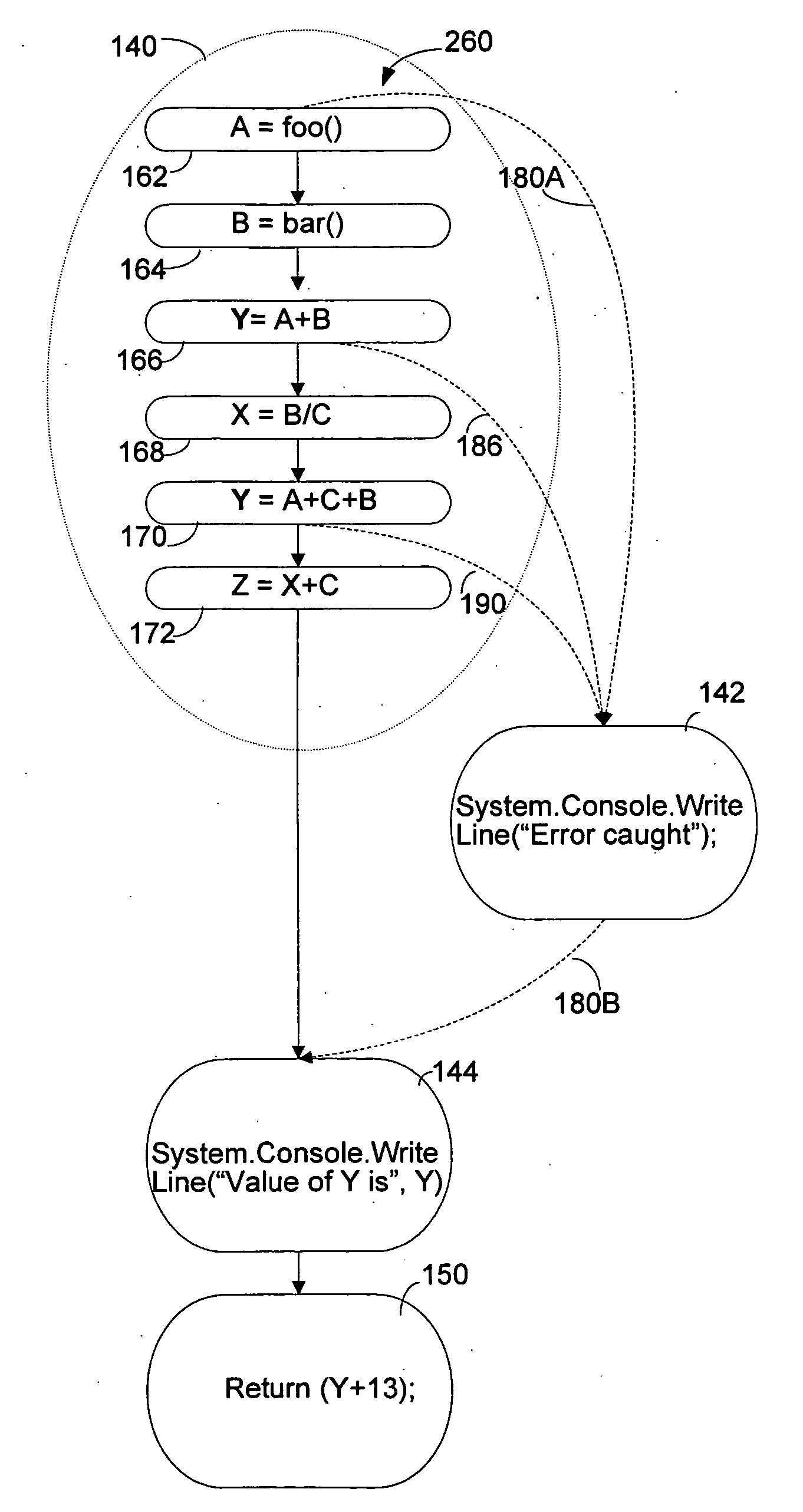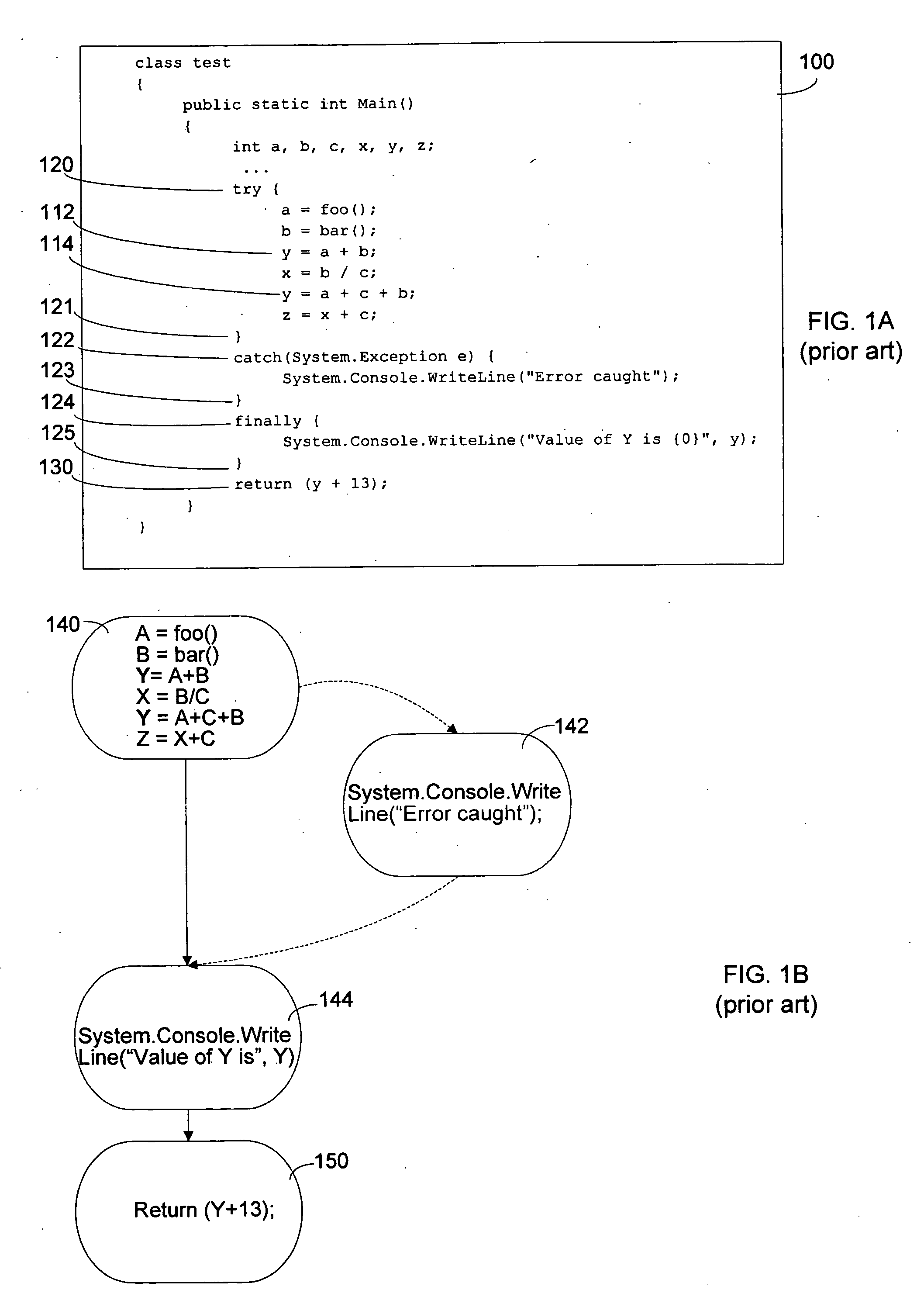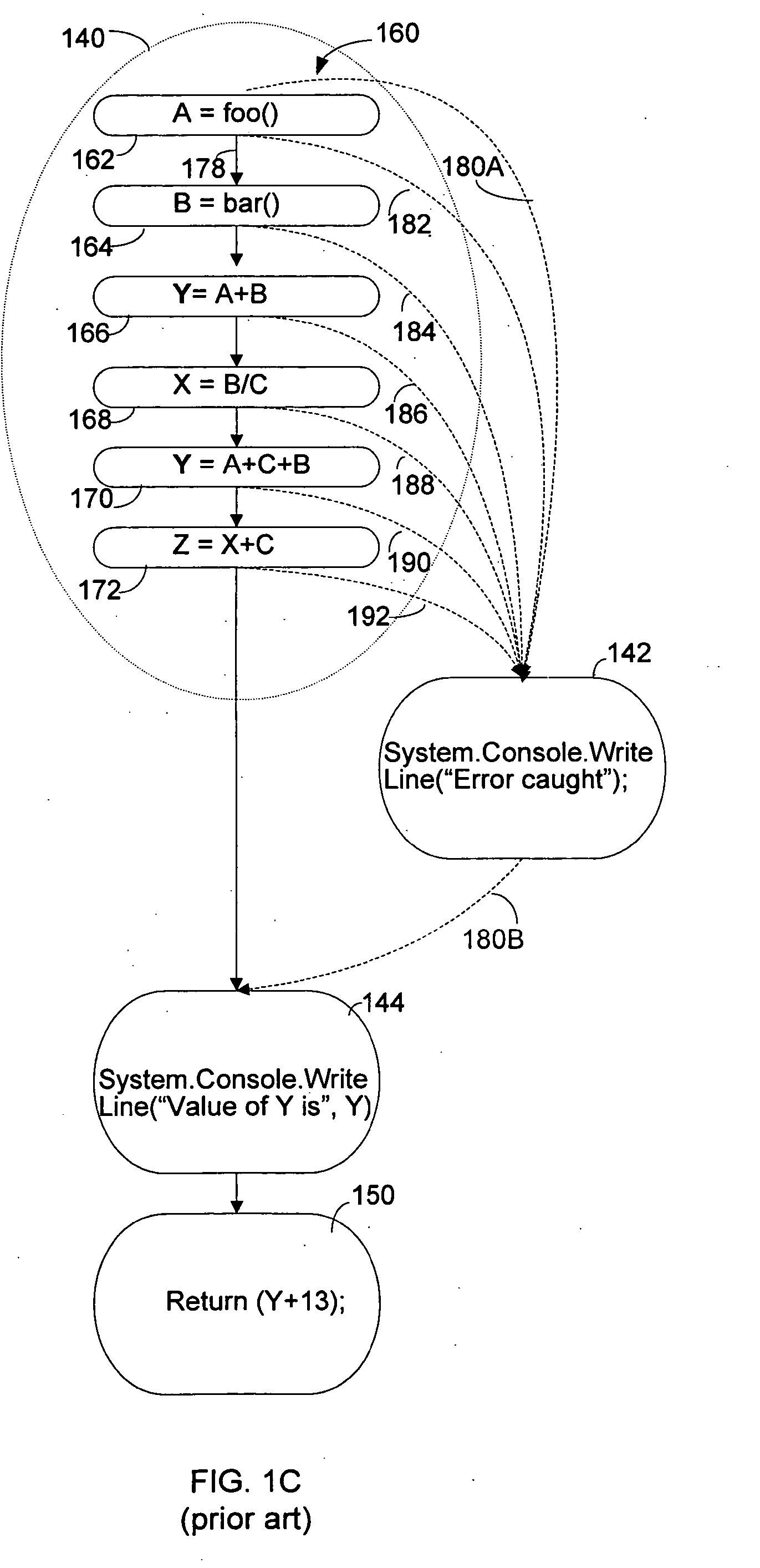Tool for processing software programs using modified live-ness definition
a software program and live-ness technology, applied in the field of computer software systems, can solve the problems of complicated flow graphs, inconvenient processing of programs based on such flow graphs, and insufficient processing of programs, so as to achieve the effect of simplifying the processing of programs
- Summary
- Abstract
- Description
- Claims
- Application Information
AI Technical Summary
Benefits of technology
Problems solved by technology
Method used
Image
Examples
Embodiment Construction
[0041] We have overcome limitations of the prior art by creating an intermediate representation of software that includes indications of the effect of asynchronous transfers. The intermediate representation may include less than all possible asynchronous edges, thereby simplifying the intermediate representation of the program and any processing based on it and ensuring accurate operation of tools that process the program using the intermediate representation. Effects of asynchronous transfers may be indicated in one or more ways. In some embodiments, the indication of the effect of an asynchronous transfer is in the form of an edge directly depicting the asynchronous transfer. In other embodiments, the effect of the asynchronous transfer is indicated by information stored in connection with a variable used in the program. The information may be stored in a symbol table or a pseudoinstruction in the intermediate representation. Multiple forms may be used to indicate the effect of an...
PUM
 Login to View More
Login to View More Abstract
Description
Claims
Application Information
 Login to View More
Login to View More - R&D
- Intellectual Property
- Life Sciences
- Materials
- Tech Scout
- Unparalleled Data Quality
- Higher Quality Content
- 60% Fewer Hallucinations
Browse by: Latest US Patents, China's latest patents, Technical Efficacy Thesaurus, Application Domain, Technology Topic, Popular Technical Reports.
© 2025 PatSnap. All rights reserved.Legal|Privacy policy|Modern Slavery Act Transparency Statement|Sitemap|About US| Contact US: help@patsnap.com



